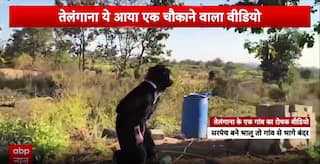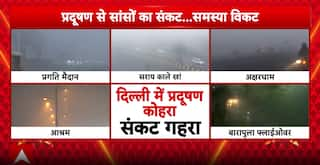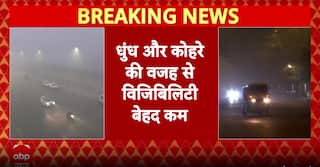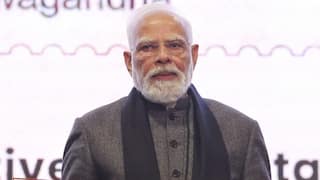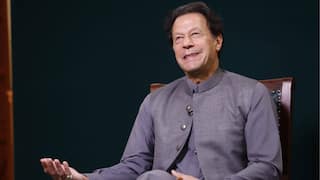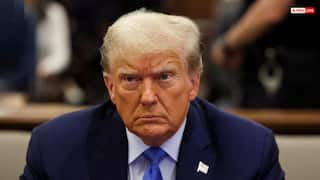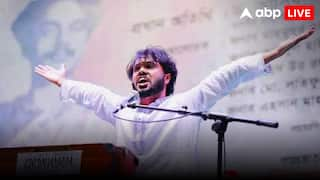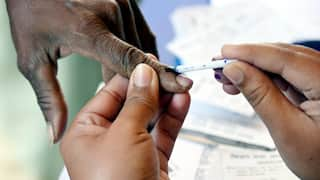Women Make Up 16 Per Cent Of Indian Scientists, This Is Quite Low: Experts On Status Of Women Scientists Since Independence
Indian women scientists: There were very few women scientists in India at the time of independence. Even after independence, the proportion of women among Indian scientists remains quite low.

Indian women left an ineffable legacy in different fields of science, both before and after Independence. They have accomplished extraordinary milestones in space, astronomy, astrophysics, physics, medicine, neuroscience, and computer science, among others. Anandibai Gopalrao Joshi, Kadambini Ganguly, Mary Poonen Lukose, Bibha Chowdhuri, Kamala Sohonie, Anna Mani, and Kamal Ranadive were some of the Indian women who made the country proud through their exemplary contributions during the pre-independence era.
Anandibai Gopalrao Joshi was the first Indian female to study and graduate with a degree in western medicine from the United States, and is believed to be the first Indian woman to set foot on American soil. In 1884, Kadambini Ganguly became the first Indian woman to get admission to Calcutta Medical College. She was the first Indian woman to practise medicine in India. In 1938, Mary Poonen Lukose became the first female Surgeon General of India. She was also the first woman obstetrician of India. Bibha Chowdhuri was the first woman high energy physicist of India, and the first woman scientist at the Tata Institute of Fundamental Research. Kamala Sohonie was the first Indian woman to receive a PhD degree in a scientific discipline. Anna Mani, known as the 'Weather Woman' of India, started her research career at the Indian Institute of Science (IISc).
ALSO READ | Anandibai Joshi, Kadambini Ganguly, Bibha Chowdhuri — Remembering Pathbreaking Women Scientists Of India
Some women scientists who achieved historic breakthroughs in science in independent India are Tessy Thomas, Ritu Karidhal, Vidita Vaidya, Soumya Swaminathan, Archana Sharma, Gagandeep Kang, and Sunita Sarawagi, among others.
Tessy Thomas served as the project director for the Agni IV and V missiles, and in 2011, became the first woman to lead missile teams in India. She is known as the 'missile woman' of India. Ritu Karidhal, a senior scientist at the Indian Space Research Organisation (ISRO), played an important role in realising the Mars Orbiter Mission (MOM), and served as the mission director for Chandrayaan-3. She is referred to as the 'rocket woman' of India. Vidita Vaidya is an Indian neuroscientist, whose primary areas of research are neuroscience and molecular psychiatry. Soumya Swaminathan is the first Indian to become the World Health Organization's (WHO's) Deputy Director General and also the UN agency's first chief scientist. Archana Sharma is a principal scientist at CERN, and the Head of the Engagement Office at the Compact Muon Solenoid (CMS) Experiment. In 2023, she was awarded the Pravasi Bharatiya Samman Award, the highest award conferred on Indians living abroad by the President of India. Gagandeep Kang is the first Indian woman to be elected as a Fellow of the Royal Society. Some of her most notable contributions to the field of medical science include building national rotavirus and typhoid surveillance networks, and establishing laboratories to support vaccine trials.
ALSO READ | Tessy Thomas, Gagandeep Kang, Soumya Swaminathan — Saluting The Indian Women In Science
There is no doubt that Indian women scientists are an epitome of knowledge. While the status of women scientists has improved since Independence, the participation of women in different fields of science remains relatively low. Women scientists in India are starting to get recognition, but most scientific disciplines are male-dominated domains.
Ahead of India's 77th Independence Day, ABP Live spoke to Dr Debarati Chatterjee, Chairperson of LIGO-India Outreach, and Associate Professor, Inter-University Center for Astronomy & Astrophysics (IUCAA), Pune, and Hari Pulakkat, Editor, IIT Madras Shaastra, and asked them how the status of Indian women scientists has changed since independence.
MUST READ | EXCLUSIVE: 'Brain Drain', Indigenous Equipment Development — Challenges For India In Science, And What Experts Suggest To Overcome Them
The situation of women scientists improved slowly for a few decades, but in the last two decades, the situation improved, Pulakkat said. There were very few women scientists in India at the time of independence. Even after independence, the proportion of women among Indian scientists remains quite low.
"According to a reply by the government in Rajya Sabha, 16 per cent of Indian scientists are women. This is quite low, and significantly less than the global average," Pulakkat said.
MUST READ | EXCLUSIVE On ABP: India Will Be A Major Global Player In Science By Next Decade, A Lot Will Be Driven By AI: Experts Predict Science Advancements
It is a daunting fact that contributions from women scientists post-independence largely went unnoticed, and only recently, women pioneers in science have started to get recognition. For instance, particle physicist Bibha Chowdhuri, and Purnima Sinha, who is the first Indian woman to do a PhD in physics from Calcutta University, are some women scientists who got recognition several decades after they performed groundbreaking research. Purnima Sinha had done her PhD under the supervision of Satyendra Nath Bose.
“Few have heard about stalwarts such as Anna Mani, who was the only woman scientist to work with C.V. Raman on atmospheric physics and instrumentation. There were many other women contributing to diverse fields such as medicine, chemistry and engineering. These were Asima Chatterjee, Anandibai Joshi, Kamal Ranadive, Darshan Ranganathan, Kamala Sohonie, Rajeshwari Chatterjee to name a few. Now, women scientists in India are getting recognition for their path-breaking achievements, such as Annapurni Subramaniam. She is the director of the Indian Institute of Astrophysics (IIA). Other Indian women scientists include G. C. Anupama, who was formerly Dean of the IIA; Padma Shri Rohini Godbole, who is a particle physicist at the Indian Institute of Science in Bangalore; Rama Govindarajan, a recipient of the Shanti Swarup Bhatnagar Prize; and Hema Ramachandran, a recipient of the Homi Bhabha Award; and a scientist at the Raman Research Institute, among others,” Dr Chatterjee said.
The Indian Women Scientists’ Association (IWSA) was founded in 1973 by 12 women scientists from a wide array of scientific disciplines, and associated with different scientific institutions, Dr Chatterjee said. “To address issues related to gender bias within the Indian astronomy community, the Working Group of Gender Equity (WGGE) of the Astronomical Society of India was established in 2015 and the guidelines were laid down in the Hyderabad Charter for Gender Equity in Physics.”
The fraction of women in STEM (Science, Technology, Engineering and Medicine) disciplines continues to be small worldwide. However, Dr Chatterjee concluded, steps such as those taken by women scientists to address issues of gender disparity are vital to ensure a larger participation of Indian women in science in the future.












